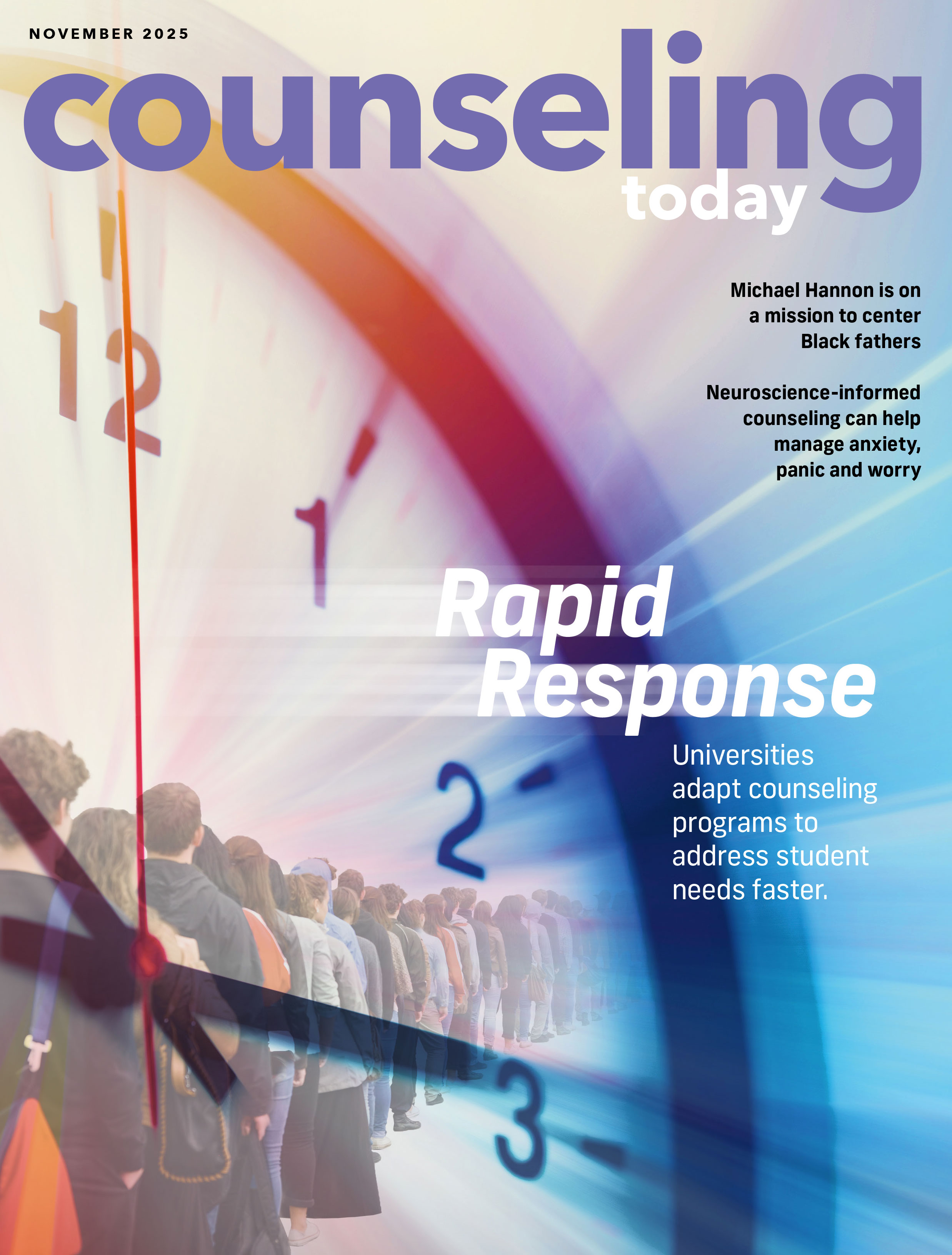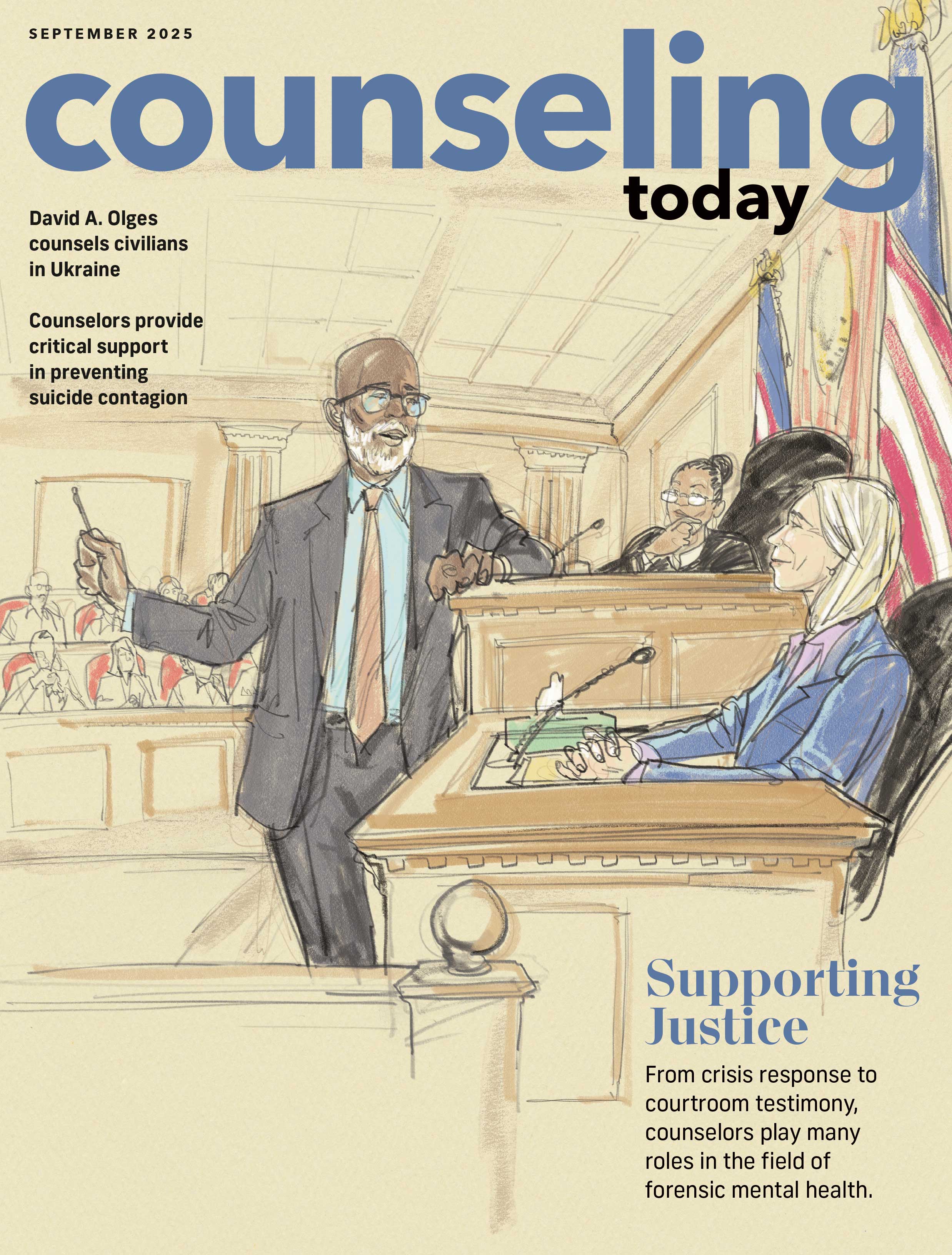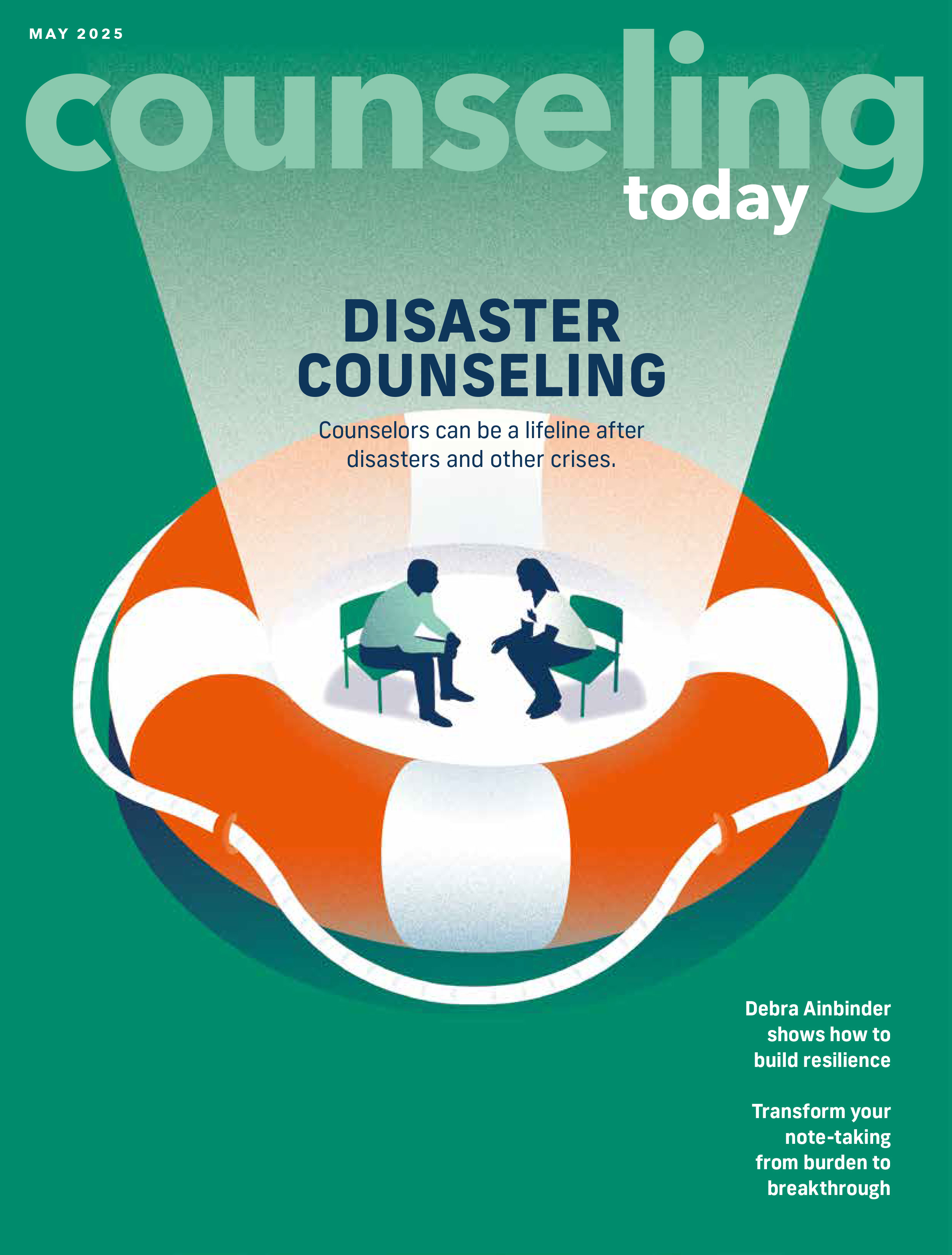
Strength of a Father
Michael Hannon is on a mission to center Black fathers.
Counseling Today Member Blog
By Elizabeth Schopfer, LPC

Although threat assessments have been around for decades, there continues to be incidents of school-based mass violence. Research showed that school counseling supervisors identified an increased need for counselors to be knowledgeable of and competent in behavioral threat assessment.
A threat assessment is an evaluation of a person’s concerning behavior to determine and decrease the potential risk they may pose to themselves and/or a community. A school-based threat assessment interdisciplinary team may comprise administrators, counseling professionals and law enforcement.
Here are 10 lessons I’ve learned from years of working in communities and schools on collaborative threat assessment teams.
1. Manage Practical Implementation of Responsibilities
Busy schedules with competing priorities can sometimes derail regular assessment team meetings. All team members contribute to determining the existence of a possible imminent threat, but after this initial phase a school-based team typically needs to attend to other urgent matters, thereby decreasing the feasibility of regular monitoring and follow-up. To ensure accountability moving forward, identify ongoing roles and responsibilities for each team member.
2. Practice Self-Regulation During Stressful Times
Counselors are trained in self-awareness, self-care and countertransference. These skills can be especially important in threat assessment. I was once asked to assist in talking with a student who had made a threat when my adrenaline was still high following a different situation. In that moment, I told the team I needed time to self-regulate before I could discuss the assessment and next steps. To effectively respond to threats instead of reacting, advocate for and model mindful self-regulation.
3. Exercise Due Diligence in Threat Assessment
When students draw violent images, the team should assess the nature of these drawings. Talk with the teacher or reporting party to determine if there is a logical explanation — for example, if the drawings are related to school projects, class material or video game characters. As with any expression, whether verbal or written, investigate what that expression means to the student and verify the explanation with other sources.
4. Reinforce Important Procedures Regularly
The counselor’s identity as a leader and advocate plays an important role in threat assessment. A part of this role is ensuring community members know how and when to report concerns and regularly reviewing this process with them. To effectively address a concern in times of stress, discuss safety plans and coping skills frequently with the community.
5. Seek Compromise in Social Media Access
While social media companies must follow privacy laws to protect consumers, those laws may prevent law enforcement from intervening in possible emergencies. A more effective compromise is needed between social media companies and law enforcement during a potential threat, because it is essential to ensure that the individual of concern does not harm themselves or others. A better balance between privacy and threat prevention should be explored.
6. Engage Your Community in Threat Assessment
In your community, it is important to assess if any groups are at higher rates of threat assessment referrals, interventions or outcomes. Anti-bias training, an interdisciplinary team and evaluating data are all necessary steps. These reflective and inclusive practices aid in thoughtful implementation and help provide accountability to the school system and larger community.
7. Embrace Varying Opinions on Action
With any interdisciplinary team, each person brings their respective training, lived experiences and perspectives. A part of each team member’s role is to explore different ways of collecting information, assessing meanings and contemplating potential interventions. Be open to differences of opinion on suggestions for action that can spur conversation toward an alternative not previously considered.
8. Coordinate Collaborative Documentation of Decisions
Counselors are trained to document everything. Similarly, team members should record what was done, why it was done and why they decided against other steps.
9. Follow-up on Potential Threats
The team should verify every concern from different sources and verify follow-up actions. During heightened stress periods and with possibly simultaneous crises occurring, there could easily be miscommunication about who is calling a parent or following up with another source of information. Overcommunication is better than under-communication.
10. Balance Rights of the Individual and the Community
Counselors should adhere to the ACA Code of Ethics, the Health Insurance Portability and Accountability Act, and the Family Educational Rights and Privacy Act, sharing information as deemed necessary for safety while respecting an individual’s right to privacy. Some important steps in navigating this balance are collaborative team discussion, documentation of decisions and the reasoning for those decisions, and seeking ethical and legal consultation.
More research is needed on the practical implementation of threat assessments, and the role of counselors on these teams, to enhance our knowledge and competency. Through individual and systemic efforts, we can work to decrease incidents of targeted violence and improve the safety of our communities.
Note: Opinions expressed and statements made in this blog do not necessarily represent the policies or opinions of ACA and its editors.
Online Exclusives
-
 Grand Prize Essay Explores Responsibility in Artificial IntelligenceDecember 2025
Grand Prize Essay Explores Responsibility in Artificial IntelligenceDecember 2025The Tomorrow’s Counselors Essay Competition recognizes graduate counseling students with exceptional insight and understanding about the counseling profession.
-
 Grand Prize Essay Discusses Mental Health Challenges Among StudentsDecember 2025
Grand Prize Essay Discusses Mental Health Challenges Among StudentsDecember 2025The ACA Future School Counselors Essay Competition, part of the annual ACA Awards, recognizes graduate counseling students with exceptional insight and understanding about the school counseling profession.
Tags: -
 The Myths (and Truths) of Human TraffickingJuly 2025 |By Samantha Cooper, Staff Writer
The Myths (and Truths) of Human TraffickingJuly 2025 |By Samantha Cooper, Staff WriterUnderstanding the reality of human trafficking makes it easier to help the victims.
Search CT Articles
Sign Up for Updates
Keep up to date on the latest in counseling practice. Sign up to receive email updates from Counseling Today.
CT on YouTube
Download Recent Issues
ACA members receive access to past full issues of Counseling Today. Log in to download copies from the archive.












